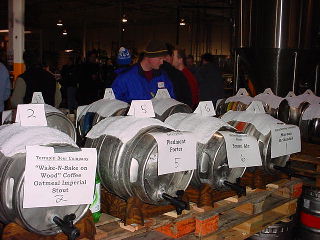

- #BREW CASK REMOVE WITHOUT UNINSTALL INSTALL#
- #BREW CASK REMOVE WITHOUT UNINSTALL UPDATE#
- #BREW CASK REMOVE WITHOUT UNINSTALL UPGRADE#
- #BREW CASK REMOVE WITHOUT UNINSTALL SOFTWARE#
- #BREW CASK REMOVE WITHOUT UNINSTALL DOWNLOAD#
#BREW CASK REMOVE WITHOUT UNINSTALL DOWNLOAD#
The command uses curl to download the Homebrew installation script from Homebrew’s Git repository on GitHub.
#BREW CASK REMOVE WITHOUT UNINSTALL INSTALL#
To install Homebrew, you’ll download an installation script and then execute the script.įirst, download the script to your local machine by typing the following command in your Terminal window: Step 3 - Installing and Setting Up Homebrew Then the tools will download and install automatically.
#BREW CASK REMOVE WITHOUT UNINSTALL SOFTWARE#
You’ll be prompted to start the installation, and then prompted again to accept a software license. You won’t need Xcode to use Homebrew, but some of the software and components you’ll want to install will rely on Xcode’s Command Line Tools package.Įxecute the following command in the Terminal to download and install these components: Xcode is an integrated development environment (IDE) that is comprised of software development tools for macOS. Step 2 - Installing Xcode’s Command Line Tools Now that you have the Terminal running, let’s install some additional tools that Homebrew needs. The command line interface on macOS is very similar, and the concepts in that tutorial are directly applicable. To get more comfortable using the command line, take a look at ( ). Alternatively, you can use Spotlight by holding down the COMMAND key and pressing SPACE to find Terminal by typing it out in the box that appears.

From here, double-click the Terminal application to open it up. Like any other application, you can find it by going into Finder, navigating to the Applications folder, and then into the Utilities folder. To access the command line interface on your Mac, you’ll use the Terminal application provided by macOS. While older versions of macOS may work, they are not officially supported. You will need a macOS computer running Catalina or higher with administrative access and an internet connection. You’ll install system tools and desktop applications from the command line interface. In this tutorial you’ll install and use Homebrew on your Mac. You’ll use Homebrew to install developer tools like Python, Ruby, Node.js, and more. Homebrew is a package manager for macOS which lets you install free and open-source software using your terminal. Package managers keep the software they install in a central location and can maintain all software packages on the system in formats that are commonly used. A package manager is a collection of software tools that work to automate software installations, configurations, and upgrades. While the command line interface on macOS has a lot of the functionality you’d find in Linux and other Unix systems, it does not ship with a package manager. The command line, also known as a shell, lets you automate many tasks you do on your computer daily, and is an essential tool for software developers. Instead of clicking buttons with your mouse, you’ll type commands as text and receive text-based feedback. The command brew install accepts one or multiple Cask tokens.The command line interface is a non-graphical way to interact with your computer. You can check for outdated Casks with brew cask outdated and install the outdated Casks with brew cask upgrade.Ĭan you use multiple cask tokens in Brew? Since the Homebrew Cask repository is a Homebrew Tap, you’ll pull down the latest Casks every time you issue the regular Homebrew command brew update.
#BREW CASK REMOVE WITHOUT UNINSTALL UPDATE#
How often do I need to update my Homebrew Cask? dmg files and dragging them to your Applications folder! To see if an app is available on Cask you can search on the official Cask website. You can for example install applications like Google Chrome, Dropbox, VLC and Spectacle. Homebrew-Cask extends Homebrew and allows you to install large binary files via a command-line tool. dmg files and moving the applications you may use Homebrew Cask to install these applications. Using Homebrew you can directly download and install many open source software and unix tools. How can I install software using Homebrew Cask? The Homebrew command is the underlying package manager that installs all those UNIX and open-source utilities you might want. Homebrew Cask will automatically download it, extract the app, and install it to your Applications folder. To install an app, run the following command. So eventually, software versions, actually installed, and tracked by Homebrew, become different.
#BREW CASK REMOVE WITHOUT UNINSTALL UPGRADE#
Is there a way to upgrade a Homebrew Cask?Īlso, brew cleanup does not do a whole lot, the binaries still live in the ~/… I know, that Homebrew doesn’t upgrade casks with auto-update (without force). Let’s see if there’s a Cask for Google Chrome: The command brew install accepts one or multiple Cask tokens. The most frequently-used commands are: To search for Casks, use brew search. All Homebrew Cask commands begin with brew, which works for both Casks and Formulae. Homebrew Cask is implemented as part of Homebrew.


 0 kommentar(er)
0 kommentar(er)
